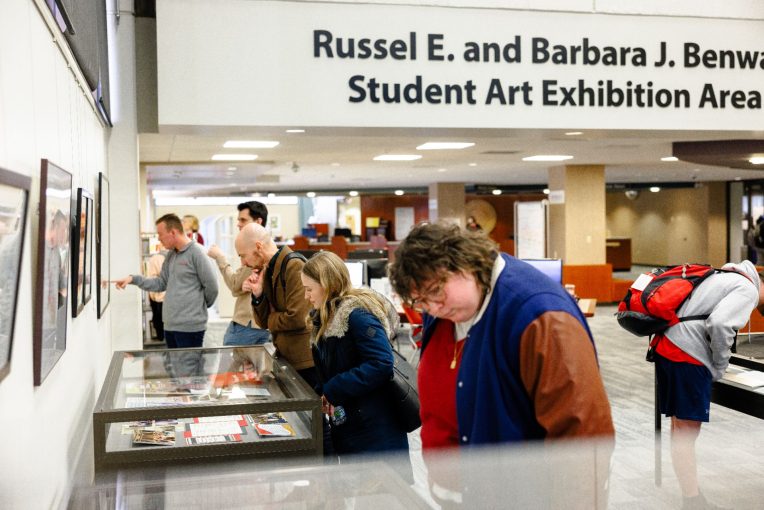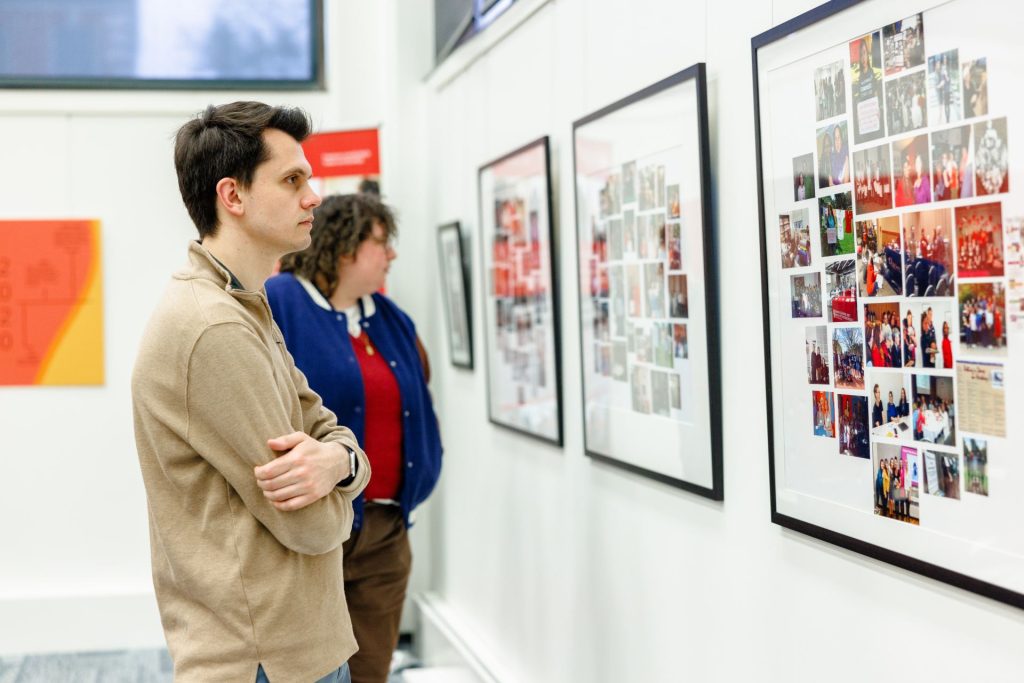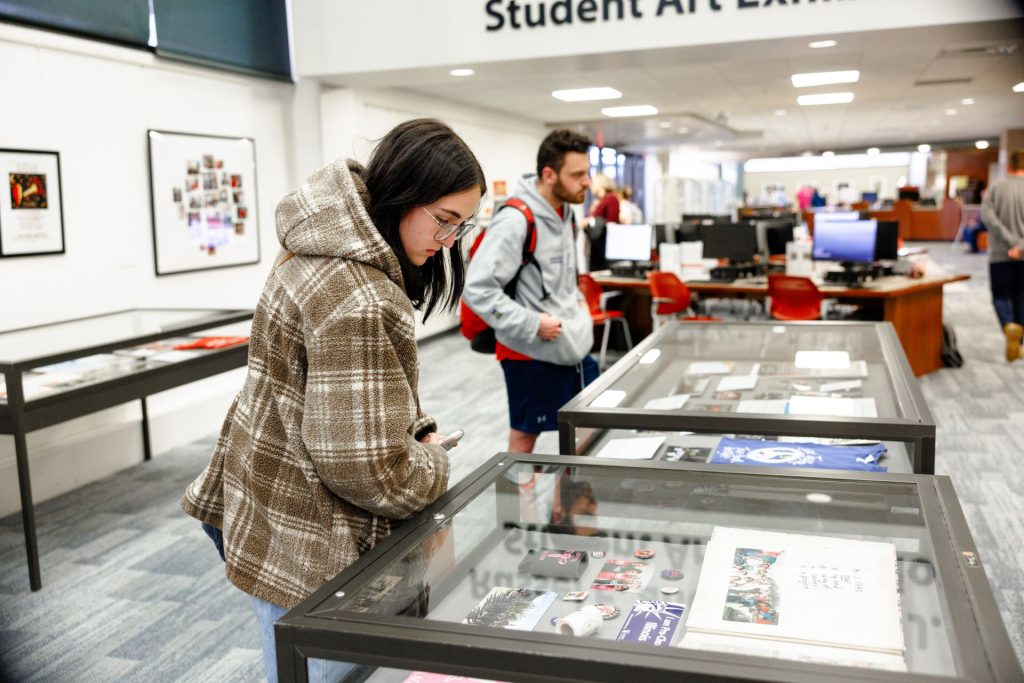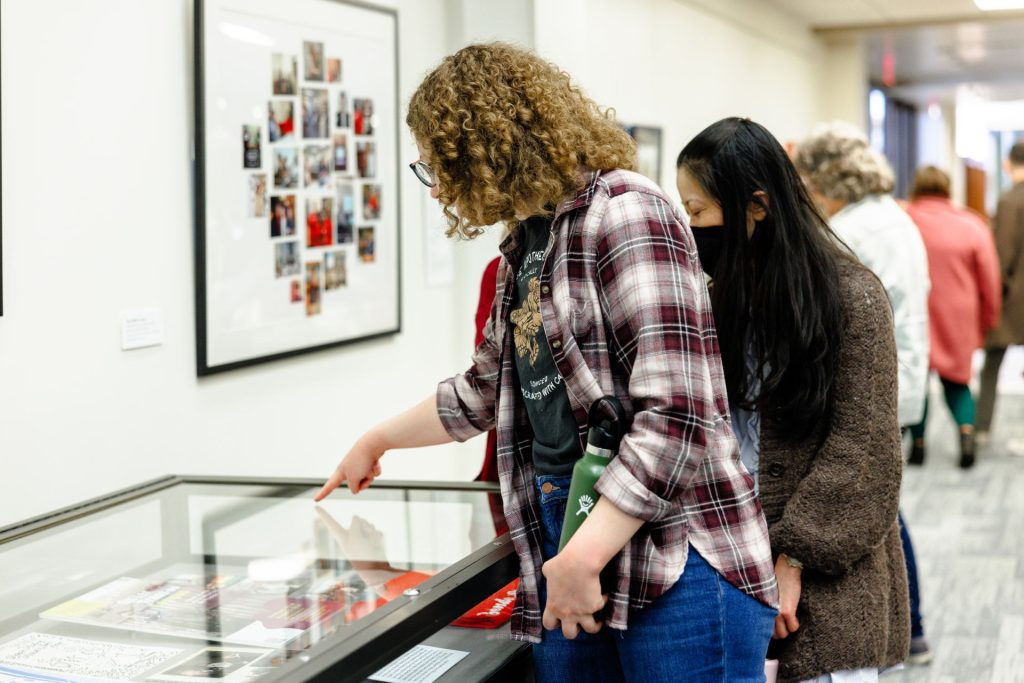The Women’s, Gender, and Sexuality Studies (WGSS) Program is celebrating its 50th anniversary this spring with a retrospective exhibit from Illinois State University’s archives.
“WGSS at 50” opened on April 3 at the Benway Gallery on the second floor of Milner Library. The exhibit chronicles the program’s history since its founding in 1974 and will be on display until May 11.
Former and current WGSS faculty, staff, students, and community members attended the exhibition opening to view the photos, memorabilia, artifacts, and documents in the display cases and the photo collages along the walls. The objects from University Archives collectively told the story of student activism, scholarship, and community. An interactive timeline integrated these events into a national timeline of women’s history.
Dr. Alison Bailey, WGSS director and university professor in the Department of Philosophy, has been with the program since 1993. She assumed the director’s position in 2006 and has been behind many of the programs and events featured in the gallery.
“I really love the pictures of our students doing activist work,” said Bailey. “I started the local chapter of the Clothesline Project the second year I was here, and it’s still going. There are pictures of our students at the Springfield Capitol with their shirts.”
The exhibit was a community effort organized by Dr. Kyle Ciani, professor of history and core faculty for WGSS, Rebecca Fitzsimmons, special collections librarian, and María Tudela, humanities and social sciences librarian.
“My role in the exhibit was working closely with Dr. (Kyle) Ciani and Rebecca Fitzsimmons from Special Collections, and of course our university archivist (April Anderson-Zorn),” said Tudela. “It’s just such a brilliant group of people to work and collaborate with. I am honored to be able to witness all these things.”
Anderson-Zorn gave an inspiring talk at the exhibition emphasizing the program’s history, contributions to the community, and the importance of its preservation.
“My role at the University is to collect, preserve, and make accessible the University’s history,” Anderson-Zorn said. “Everybody’s materials, photographs, memorabilia, ephemera, documents—I try to preserve it. My role is to get that stuff to the people who want to use it, but also to educate with those materials. This exhibit is a prime example about educating about the importance of women’s and gender studies on campus. And we need to keep advocating for it.”
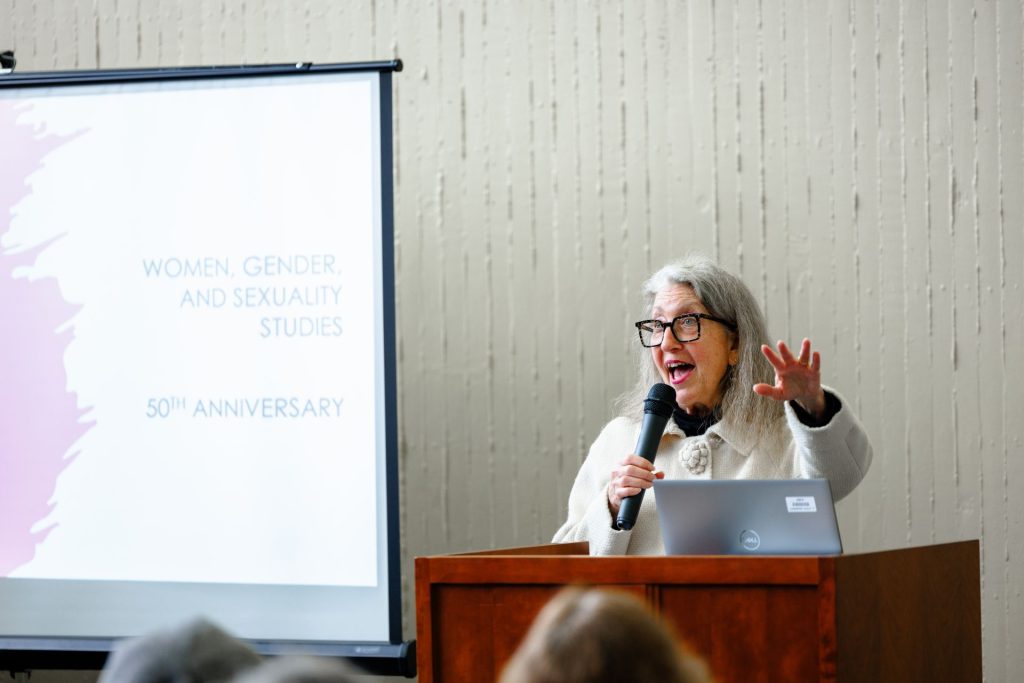
Ciani, also spoke at the event, emphasizing the importance of the program and the need to preserve the history of women who, in her experience, don’t often save their work for the future.
“They don’t think about saving their stuff because they don’t consider it valuable,” Ciani said. “Fortunately, people in WGSS did. University Archives has received materials from former faculty, staff, and alumni. We are always interested in more, so don’t throw it away, but give it away. Give it away to April.”
For junior history and social sciences education major and WGSS minor Hannah Pelphrey and second-year English master’s student Xan Daggett, the history revealed in the exhibit is fascinating.
“It shows the progress the program has gone through and how it continues to move with time,” said Pelphrey.
“I would say the same,” said Daggett, who’s working toward their graduate certificate in WGSS. “I went here for my undergrad from 2015 to 2019. It’s interesting how it’s progressed even during the time I was gone, the change that happened, and seeing that go all the way back, step by step.”
The exhibit will become a new chapter in the program’s history, one immortalized in the WGSS reception book.
Begun eight years ago and filled with old and new names alike, the book will become another storied artifact in the program’s enduring history.
